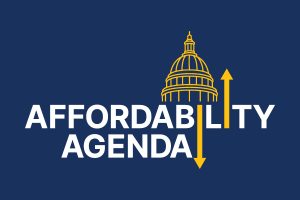
Workers’ Compensation
Goal & Issue Summary
Promote legislative, judicial and regulatory actions that maintain an efficient workers’ compensation system that provides adequate worker benefits while protecting the competitive position of California employers.
Issue Summary
Workers’ Compensation
Position: California will soon need to decide whether it too should eliminate the Subsequent Injury Benefits Trust Fund (SIBTF) Ballooning Out of Control or address some of the challenges highlighted by the RAND report. The California Chamber of Commerce supports system changes that will reduce employers’ annual assessments, but also cautions that any reforms should be thoughtful so that there are no unintended consequences that drive up system costs elsewhere or encourage additional litigation.
Major Victories
Maintained Integrity of Workers’ Compensation System by backing Governor’s veto in 2017 of a bill that would have expanded the scope of workers’ compensation beyond work-related injuries (AB 570).
Won amendments in 2016 removing the most onerous provisions of bills that would have interfered with the ability of businesses to control workers’ compensation costs before those proposals were signed into law (SB 1160, AB 2230).
Backed Governor’s veto of a bill in 2016 that would have expanded the scope of workers’ compensation beyond work-related injuries (AB 1643).
Supported Governor’s signing of a bill in 2016 discouraging workers’ compensation fraud (AB 1244).
Supported veto of bill in 2015 to expand workers’ compensation coverage to some injuries occurring outside the workplace (AB 305).
Backed creation of prescription medication formulary in 2015 to ensure injured workers receive appropriate medications and to decrease dispute-drive delays and reduce costs in workers’ compensation system (AB 1124).
Joined labor and attorneys in supporting legislation to clarify current law in 2015 to ensure no injured worker is refused benefits based on immigration status (SB 623).
In 2015, Filed a friend-of-the-court brief in a case that upheld one of the cost-saving reforms from 2012—the imposition of the lien activation fee that helps sustain the system (Angelotti Chiropractic, Inc. v. Baker, et al.).
Supported veto in 2014 of costly expansion of presumption that certain diseases and illnesses are caused by the workplace (AB 2616).
Stopped cost pressures in the workers’ compensation system in 2013 that would have exposed employers to higher costs by in effect forcing them to pay higher temporary disability payments before prevailing wage disputes are adjudicated (AB 454); and a proposal attempting to unravel cost-saving workers’ compensation reform provisions (SB 626).
Supported workers’ compensation system reform in 2012 that offsets necessary increases in permanent disability benefits and potentially lowers system costs for employers by reducing delays and litigation in the system, addressing the lien epidemic, shortening the medical-legal process, implementing an independent medical review system and streamlining the permanent disability schedule (SB 863).
Stopped costly workplace mandates, such as 2011 bills increasing workers’ compensation costs (AB 375, AB 1155); and a 2010 proposal eroding the cost-saving workers’ compensation reforms (SB 145).
Helping control workers’ compensation costs by backing 2011 proposals signed into law to lower pharmaceutical costs, lower frictional costs in the workers’ compensation system, streamline the process, establish a fee schedule for vocational experts and ensure contractors have coverage (AB 378, AB 335, AB 1426, AB 1168, AB 397).
In 2009, stopped one bill that would have increased workers’ compensation costs (AB 664), and stalled another that would have increased workers’ compensation costs significantly and made it more expensive to employ Californians by arbitrarily increasing permanent disability benefits (SB 773).
In 2008, protected workers’ compensation cost savings by stopping a roll-back of reforms and the resulting doubling of permanent disability costs (SB 1717).
In 2007, protected workers’ compensation cost savings by stopping roll-back of reforms and doubling of permanent disability cost increases (SB 936), plus requirement for employers to provide an injured worker with a job voucher before knowing the amount of benefit due with no avenue to recoup costs (SB 942).
In 2007, resolved workers’ compensation temporary disability issues. Converted a former “job killer” proposal into a positive vehicle, negotiating amendments to resolve a problem in current law in a way that retains the cost savings in the 2004 reforms by maintaining the current 104-week cap on temporary disability benefits while allowing injured workers to receive those benefits within five years from the date of injury (AB 338)
Protected workers’ compensation reforms in court. See CalChamber in Court.
In 2006, protected workers’ compensation reforms by securing a veto of legislation rolling back the reforms by arbitrarily doubling the permanent disability payments over three years without sound data with which to base the increase (SB 815).
Safeguarded the reforms that have led to a steady decline in workers’ compensation premiums by stopping legislation that would have negated those reforms, including a “job killer” bill that would have increased costs and uncertainty in the workers’ compensation system by allowing unqualified injured workers to select and pay for medical treatment outside the exclusive remedy workers compensation system — opening up the floodgates to abuse injured workers and create liability for employers.
Worked on numerous regulatory packages that implemented the reform proposals in the CalChamber-supported workers’ compensation reform legislative package. The regulations included the permanent disability rating schedule, medical provider networks, independent medical review, utilization review standards, audit penalties, utilization review penalties and repackaged drugs.
Stalled legislation that would have lifted caps on the number of treatment visits allowed for chiropractic and physical and occupational therapy, previously out-of-control and overused treatment and a significant cost driver.
Neutralized legislation that would have prohibited the administrative director of the Department of Workers’ Compensation from setting a reasonable fee schedule for repackaged drugs, a major workers’ compensation cost driver.
Recent News
Workers’ Compensation Bills
Coalitions
- California Employers Coalition
- Workers’ Compensation Action Network (WCAN)
- California Coalition on Workers’ Compensation (CCWC)
Committees
Staff Contact
 Ashley Hoffman
Ashley Hoffman
Vice President and Deputy Chief of Staff for Advocacy
Labor and Employment, Workers’ Compensation



